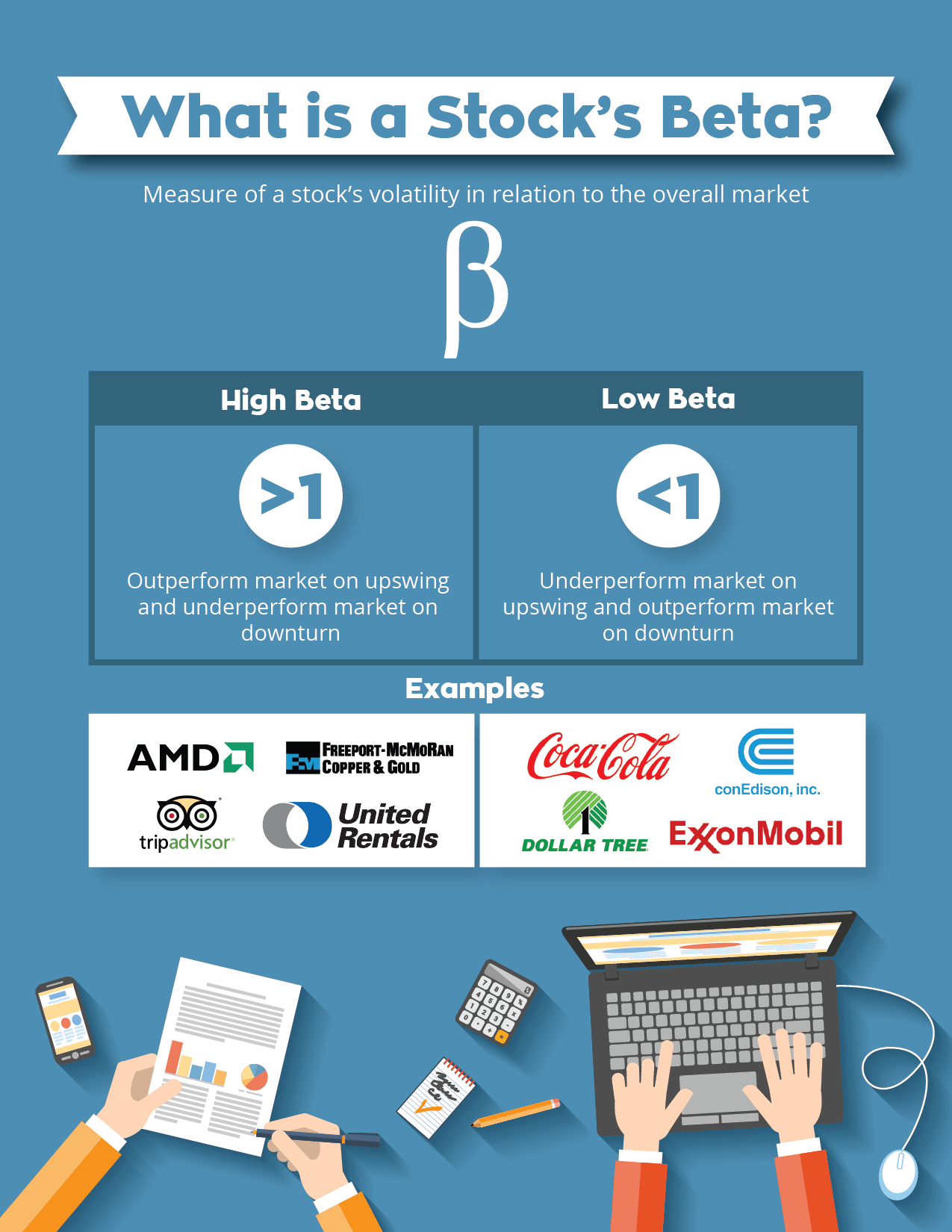Understanding Risk
When it comes to investing, it’s extremely important to understand risk. Pretty much every financial asset’s price depends on risk to some degree. When dealing with individual stocks, the risk is how much the price changes over any given period. One way to measure a stock’s price movements is by looking at its beta.
What is Beta?
A stock’s beta is a measure of the volatility of a stock in relation to the overall market, typically the S&P 500. A beta of 1 means that a stock’s price moves in a 1 to 1 relation to the overall market.
Stocks with a beta under 1 are considered low beta stocks. On average, low beta stocks move less than the overall market. For instance if the S&P 500 increased 10%, but Apple only increased 5%, its beta would be around .5 since it moved about half as much of the overall market. This idea works to the downside as well. If the S&P 500 was down 10%, with a beta of .5, Apple would have only lost about 5%. As a result, low beta stocks typically underperform the market on upswings, but outperform on downturns.
Examples of low beta stocks:
- Coca-Cola (KO)
- Consolidated Edison (ED)
- Dollar Tree (DLTR)
- Exxon Mobil (XOM)
High beta stocks, or those with a beta over 1, have returns that exceed the overall market both positively and negatively. When the market is moving higher, these names typically do even better. However, they also run the risk of dropping rather quickly in the event of a downturn. High beta stocks are often also growth stocks with high price to earnings multiples.
Examples of high beta stocks:
- Advanced Micro Devices (AMD)
- Freeport-McMoRan (FCX)
- TripAdvisor (TRIP)
- United Rentals (URI)
The Beta Formula
For those of you who are mathematically inclined, the formula for beta is the covariance between the stock and overall market return divided by the variance of the market return.

Most trading platforms provide a stock’s beta, but it is relatively easy to calculate beta in Excel. Calculating a stock’s beta yourself also gives you the added advantage of controlling the exact time period you use, whereas you can’t be sure which time period the trading platform is using. Also, since the time period you choose plays an important role, a stock’s beta can be significantly different if you’re looking at a month’s worth of returns vs. six months vs. a year.
Calculating Portfolio Beta
Once you have calculated or looked up the beta for each stock you own, you can calculate the beta of your portfolio by multiplying each stock’s beta by the percentage that stock makes up of your total portfolio.
Assessing Your Risk
By knowing your portfolio’s total beta you will be able to assess if you are taking on too much or not enough risk, depending on your personal risk tolerance.
I try to review my overall portfolio beta every few months to make sure my investments are in line with my objectives. If you have a beta over 1, chances are you own some riskier stocks. It also means that you should be earning a greater return than the market when the overall market is moving up, but you must also remember that you could suffer greater losses if the market goes down.
Subscribe: Learn how to avoid 9 common investing mistakes
If you’re worried about a market downturn, then lowering your portfolio’s beta should help you outperform a downward trending market. Just remember that you will most likely underperform if the market moves higher.
What’s Your Beta?
Try calculating the beta of your portfolio. Were you surprised by how high or low it was? Let me know in the comments below.






